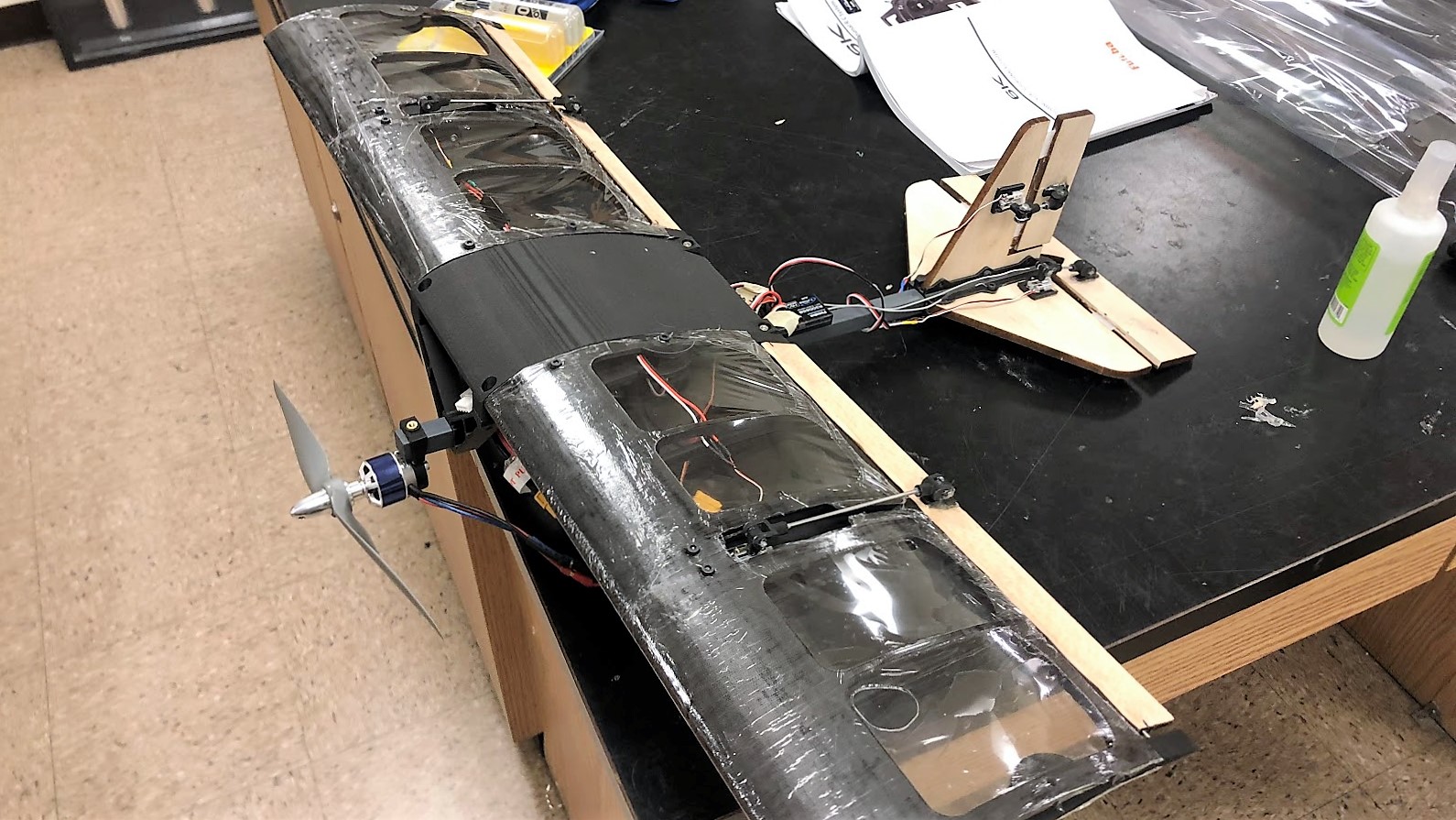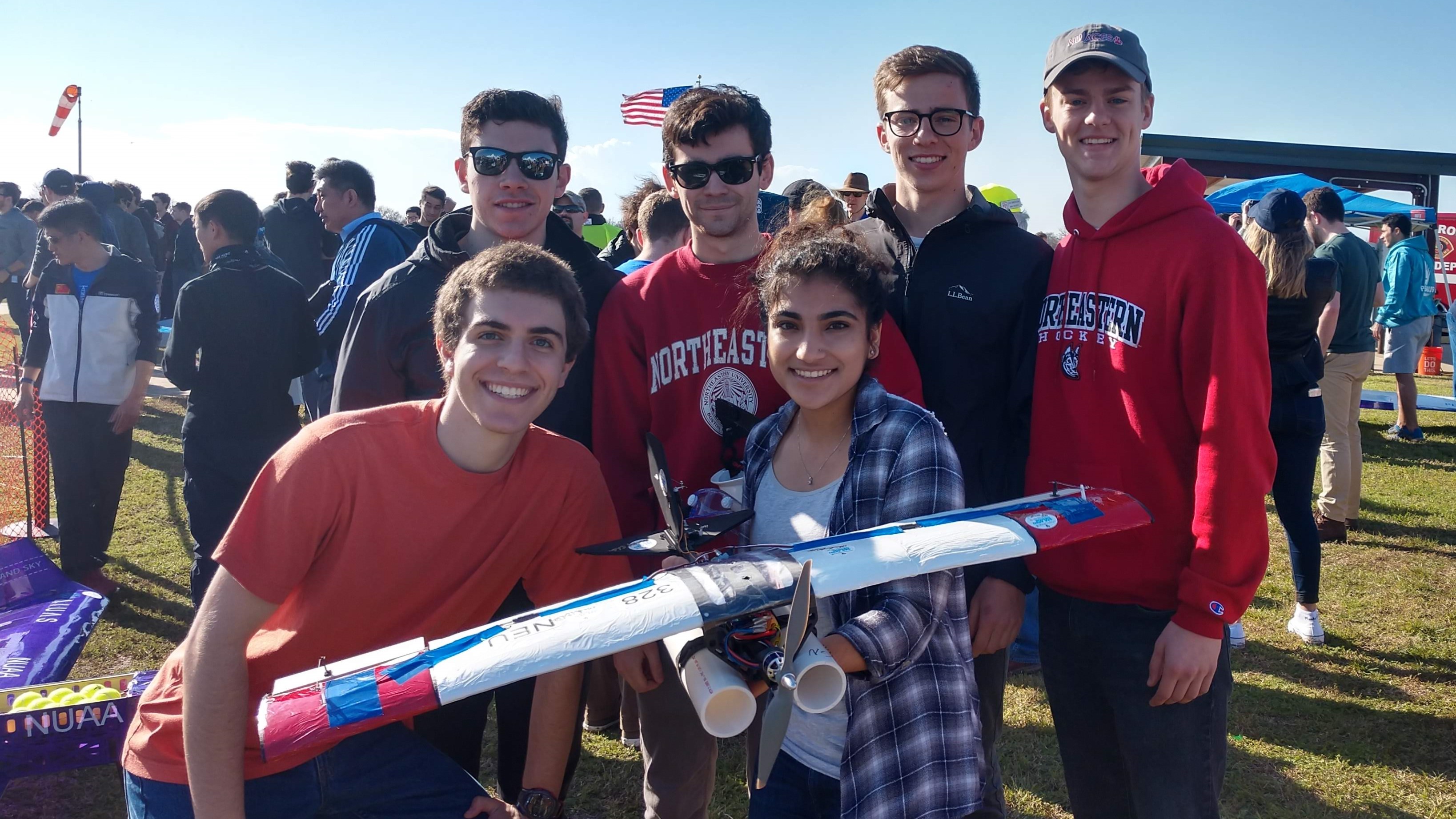Design
During the design stage, we worked to identify the best strategy for the competition. We concluded that a wing over configuration would offer us the most stability and therefore versatility in payload.
During the design process, my work included:
- Choosing airfoils for the highest Lift/Drag ratio at low Reynolds Number (1000-5000) due to small scale wings.
- Designing wing structures and airfoil profile in SOLIDWORKS for 3D print.
- Optimizing 3D printed structures in order to reduce weight.
- Designed parts to be quickly and easily removed from chassis and to change position along length of plane for CG adjustment.
Solidworks render of early design.

First prototype with clear "MonoKote" to showcase 3D printed wing sections.
Build
We assembled the plane using both typical model construction methods and novel processes like 3D printing. This allowed us to rapidly iterate designs more easily than with traditional build methods.
Unique features:
- PVC center spar for easily mounting and removing components.
- 3D printed wing structures using Markforged Onyx filament.
- Linear micro servos for control surface actuation.
- Wing structural spar is integrated into the 3D printed wing structure.
Redesign
After initial testing, we found that the plane was too heavy to fly within the constraints of the competition. In order to reduce weight but still be able to quickly assemble the plane we chose to make material changes and retain much of the design.
New features included:
- Hollow carbon fiber body spar which signifigantly reduced chassis weight.
- Foam wings with carbon fiber wing spars.
- Larger wing servos for more reliable actuation.

Fully assembled design with "MonoKote" covering on wings.

AeroNU Fixed Wing Team at competition.
Results
After two years of development, we were able to take the plane to compete at SAE Aero Design East 2019. This was the first comptetion anyone on the team at the time had attended. We were able to talk to aerospace professionals from around the country and present our design to a panel of experts. We also got to see some amazing student designs from teams all around the world.
These are the major accomplishments that stand out for me:
- Successful full build of plane.
- Performed three flight attempts in varying conditions.
- Quickly assessed and fixed damage after unsuccessful attempts.
- Led a team of students to an international competition and inspired them to continue in aerospace design.